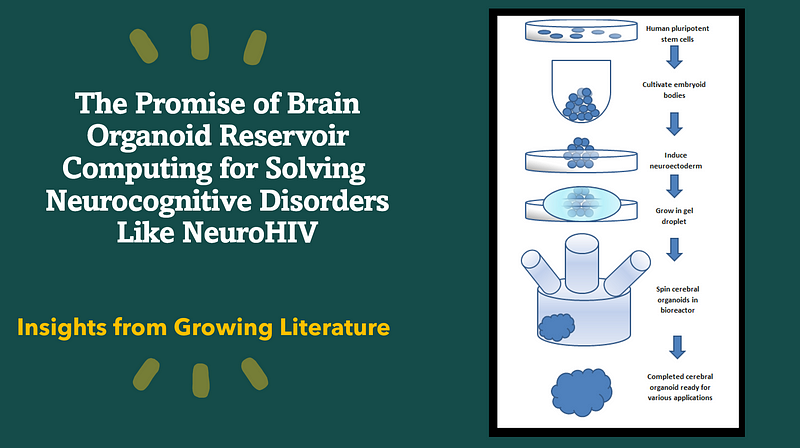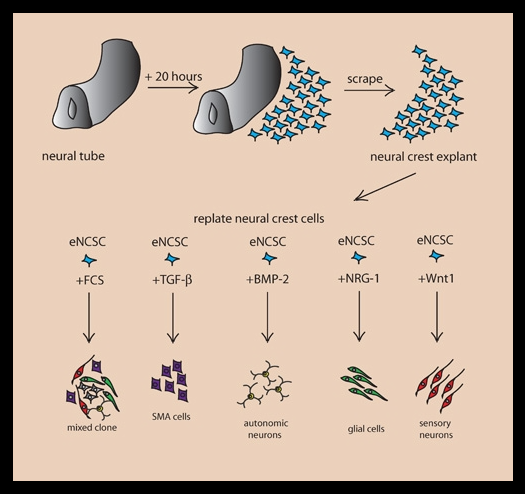Neurocomputing Innovations: Hope for NeuroHIV and Cognitive Disorders
Written on
Neurocomputing, a burgeoning discipline, stands at the intersection of neuroscience and technology, offering new insights into treating complex neurocognitive disorders. Recent advancements in brain organoid reservoir computing have sparked my interest and research in this field.

The development of cerebral organoids, as noted in recent articles from Nature, illustrates the potential of these structures in understanding brain functionality and enhancing artificial intelligence. In this discussion, I’ll focus on NeuroHIV—a condition that encompasses the neurological issues stemming from HIV infections impacting the brain and nervous system.
NeuroHIV can lead to a spectrum of cognitive, motor, and behavioral challenges, classified under HIV-associated neurocognitive disorders (HAND). These range from mild cognitive impairments to severe dementia, as well as other complications such as peripheral neuropathy.
The factors contributing to these neurological issues include the virus's direct impact, opportunistic infections, side effects from antiretroviral treatments, and other HIV-related concerns. Insights gained from NeuroHIV research can also extend to understanding other brain infections.
Overview of Technologies in Health Sciences
Since its inception in the early 1990s, neurocomputing has explored computational models that reflect the brain's architecture and functions. The integration of brain organoids with reservoir computing embodies the principles of neurocomputing, aiming to emulate and analyze the brain's computational functions.
Neural computation studies and mimics the processing capabilities within biological neural networks, applying mathematical models to simulate neuronal behavior and interactions. Its goal is to comprehend how neural networks process information, learn, and execute complex tasks like pattern recognition and decision-making.
Computational biology, a branch of biotechnology, employs mathematical and computational methods to dissect and model biological systems, focusing on algorithms and statistical techniques to interpret complex biological data.
Reservoir computing, inspired by brain functionality, consists of a fixed, randomly generated network of interconnected neurons known as the reservoir. This reservoir dynamically processes incoming data.
Understanding Brain Organoid Reservoir Computing in AI
Brain organoid reservoir computing merges neuroscience, computer science, and AI principles, significantly impacting AI development and our understanding of brain mechanics. The complexity of brain organoids and reservoir computing systems allows for exploring emergent phenomena and self-organization.
Brain organoids are miniaturized 3D cultures derived from human pluripotent stem cells (iPSC), capable of self-organizing to replicate certain human brain features. Reservoir computing operates with a recurrent neural network architecture characterized by a static ‘reservoir’ of neurons where only output weights are adjusted. This simplicity and efficiency have made reservoir computing particularly appealing.
These systems are integral to AI, enabling machines to perform tasks typically requiring human intelligence, such as understanding natural language and learning from extensive datasets.
Use Cases and Advantages of Brain Organoids
Brain organoids are versatile tools across various domains, serving as biological models that replicate aspects of human brain structure and function. They enable researchers to investigate neurodevelopment, neurological disorders, and brain diseases within a controlled environment.

These organoids play a crucial role in drug discovery, allowing for screening potential therapies and evaluating drug effectiveness and safety. They facilitate personalized medicine by providing insights into individual responses to drugs and disease progression.
Additionally, brain organoids enhance our understanding of human brain development and the complexities of neurodevelopmental disorders, paving the way for novel therapeutic strategies.
By leveraging the self-organizing nature of brain organoids and the efficient processing of reservoir computing, we can enhance AI systems’ capabilities in handling complex temporal data. This biologically inspired approach may lead to significant advancements in AI research.
Ethical Considerations
The use of brain organoids introduces ethical dilemmas, particularly concerning their resemblance to human brain structures and the potential implications for consciousness. Questions arise regarding the capacity of these organoids to experience consciousness as they develop neural networks.
Concerns also surface regarding the ethical treatment of biological materials, particularly in the context of consent, ownership, and accessibility to biological resources. The risk of unforeseen consequences, such as replicating neural disorders or producing entities with sentient-like characteristics, further complicates the ethical landscape.
A commitment to transparent discussions and robust ethical frameworks is essential to guide the responsible application of brain organoids in AI research while maximizing their benefits.
Researchers are advised to adhere to ethical standards in their work with brain organoids, ensuring that studies are conducted responsibly and with awareness of the broader implications.
For instance, in 2010, researchers introduced dynamic miniaturized bioreactor systems to bridge predictive substance testing gaps, utilizing chips that contain micro-bioreactors for various organs.
Insights on NeuroHIV
The societal impact of HIV has been significant since the 1980s. Recent advances in 3D brain models derived from stem cells provide critical insights into HIV's effects on the brain, facilitating the study of related disorders.
Neurovirology, the study of viruses affecting the nervous system, is particularly relevant to NeuroHIV. Research in this field explores how HIV interacts with neural cells, compromises the blood-brain barrier, and causes inflammation and neuronal damage.
Recent papers have highlighted the potential of organ-on-a-chip systems that replicate organ functions in laboratory settings, automating the cultivation of organoids under controlled conditions. This technology advances our ability to study neural disorders, including those related to HIV.
Readiness for Clinical Application
While the potential applications of these technologies in understanding neurological disorders and enhancing AI capabilities are promising, they remain largely experimental. More research is required to validate their safety and efficacy for clinical use.
Collaborative efforts among scientists, clinicians, and the public will be crucial to harness the full potential of these innovations for human health improvements.
Conclusions and Insights
The integration of brain organoids with reservoir computing offers a fascinating avenue for advancing neurocomputing, particularly in addressing NeuroHIV. This innovative field promises deeper insights into brain functionality and effective strategies for managing neurological complications linked to infections.
Beyond AI research, brain organoids present opportunities in drug testing, disease modeling, and personalized medicine, enabling controlled studies of neurological disorders.
This interdisciplinary approach fuses principles from neuroscience, computer science, and AI, potentially revolutionizing our understanding of brain functions while addressing cognitive issues resulting from HIV.
However, ethical concerns must be carefully navigated, emphasizing the need for responsible research practices and adherence to ethical guidelines. This ensures that the potential benefits of brain organoids in AI research are realized without compromising ethical standards.
Thank you for engaging with my insights. I wish you a healthy and fulfilling life.